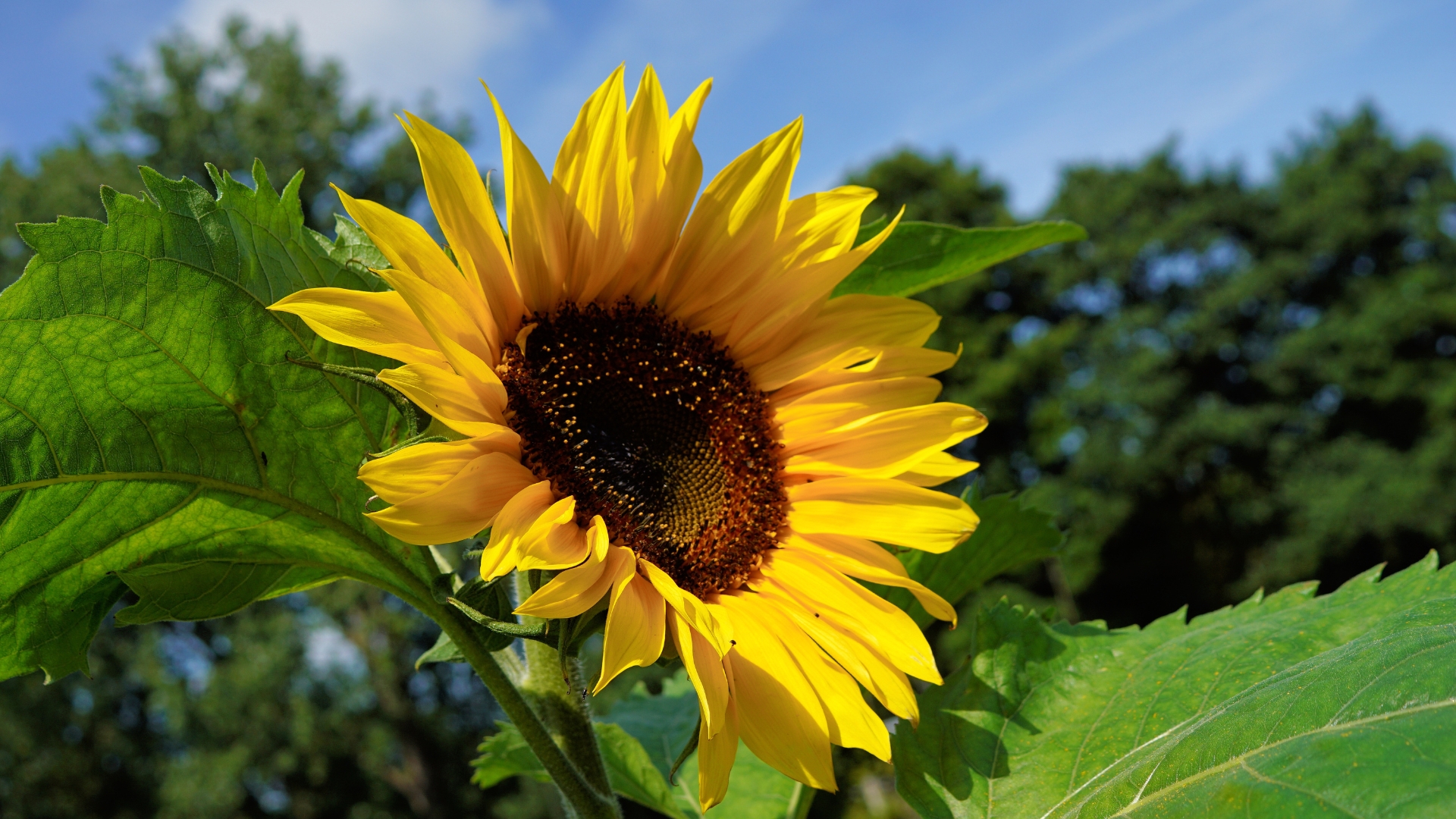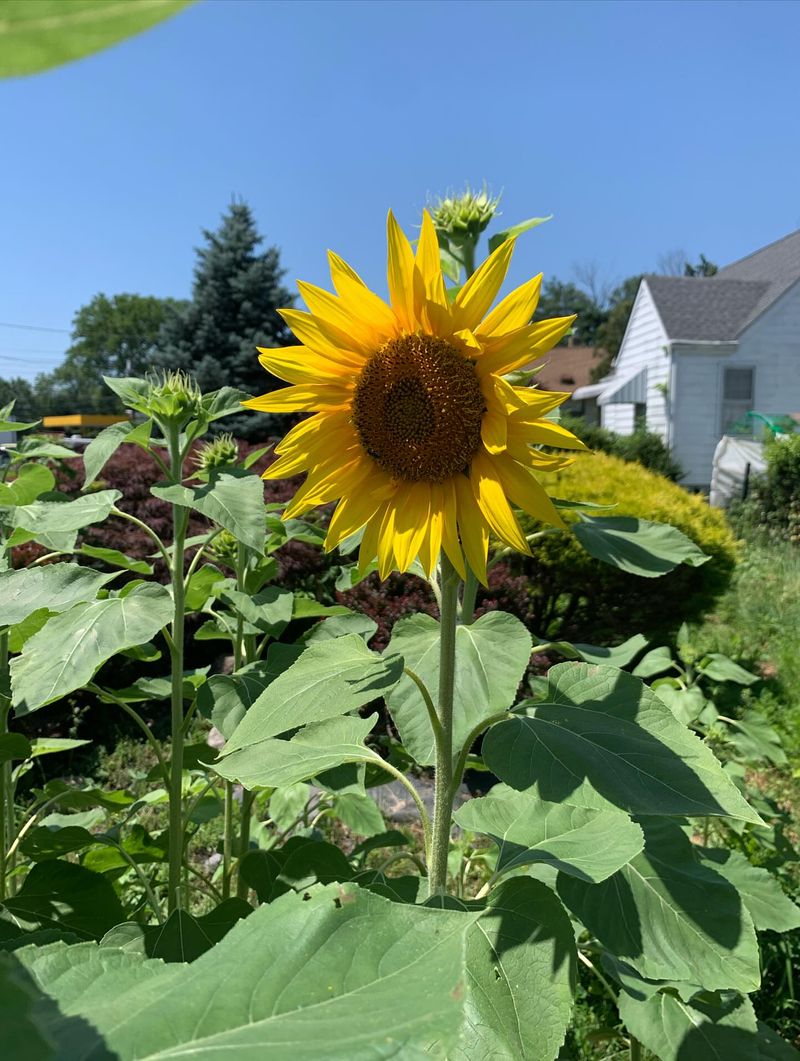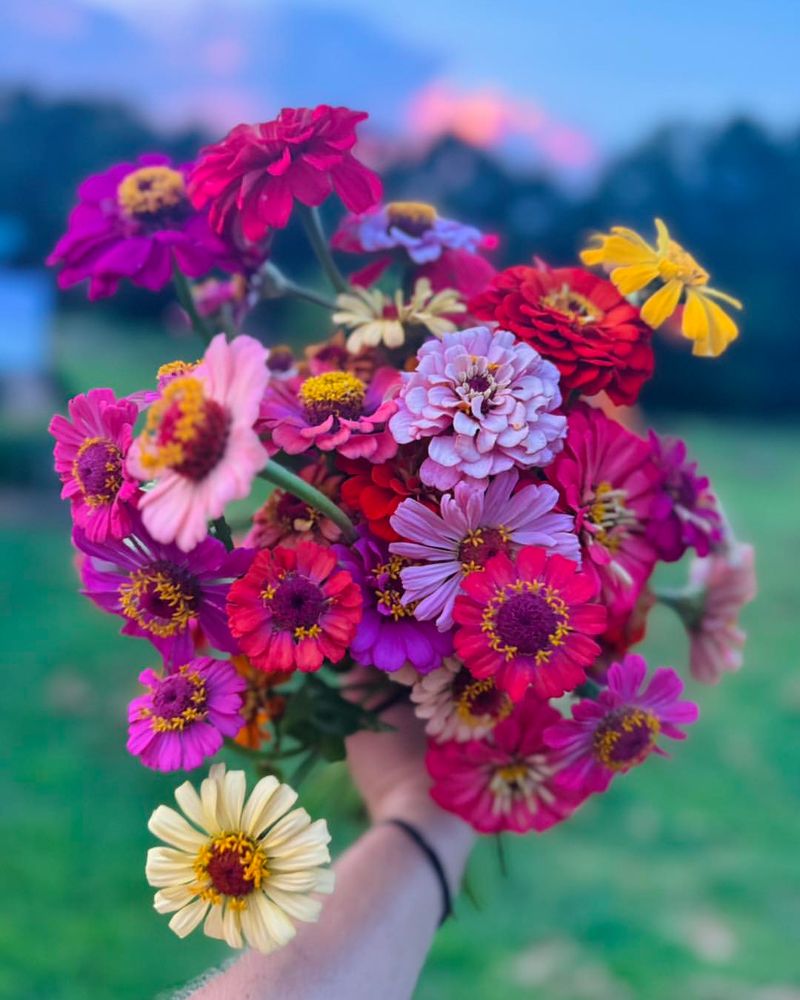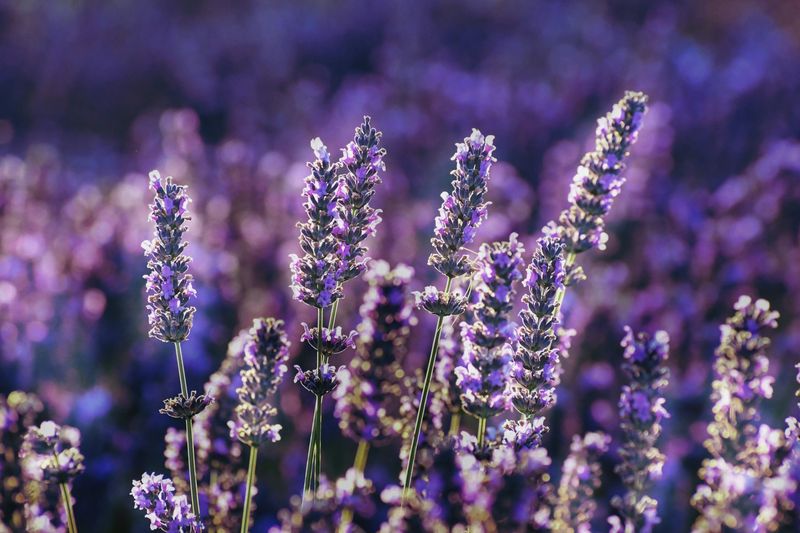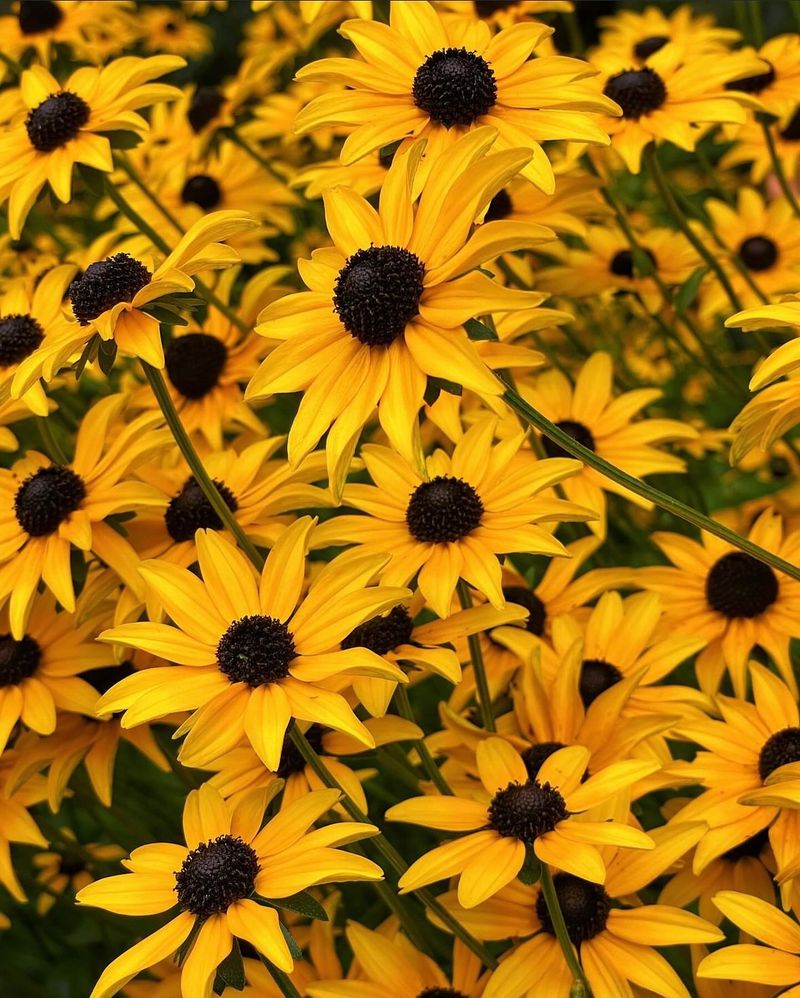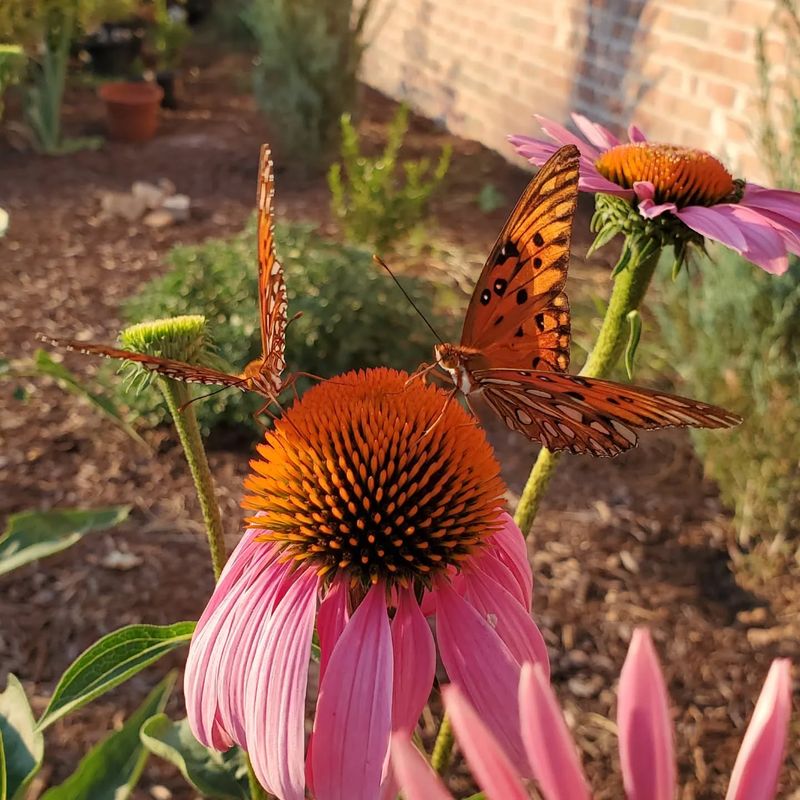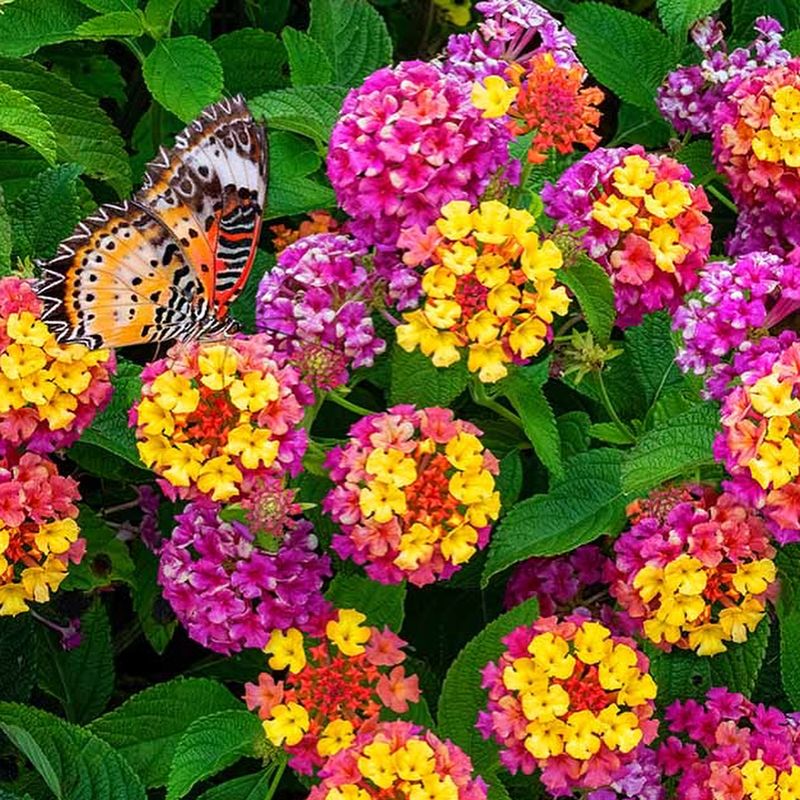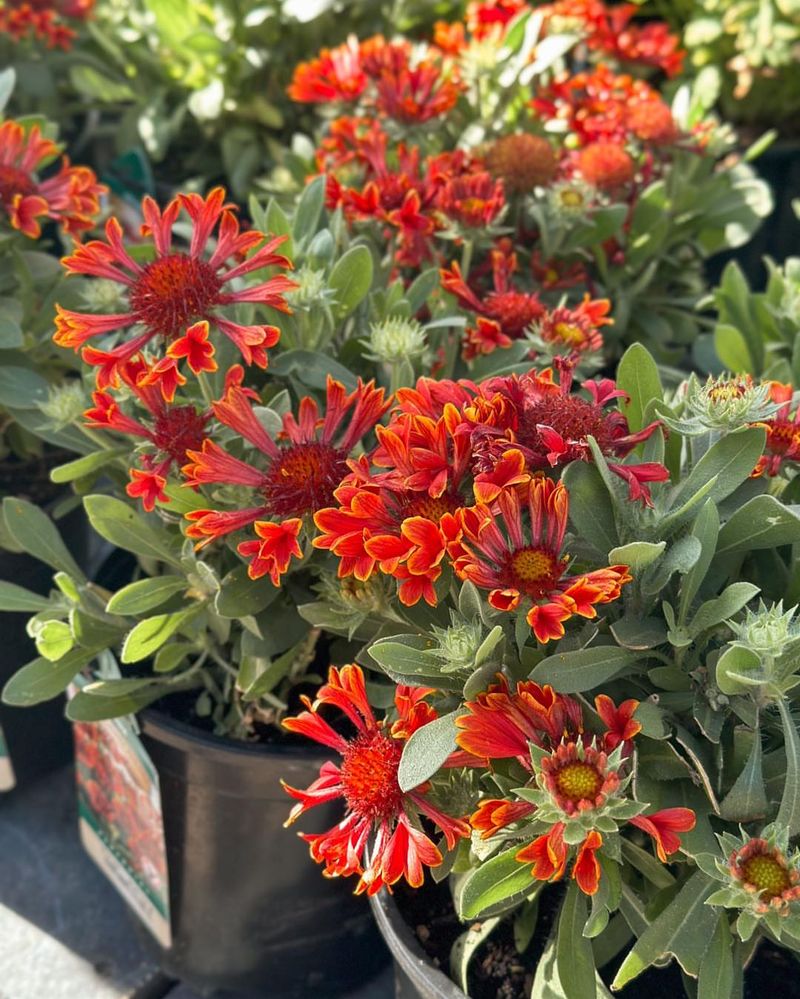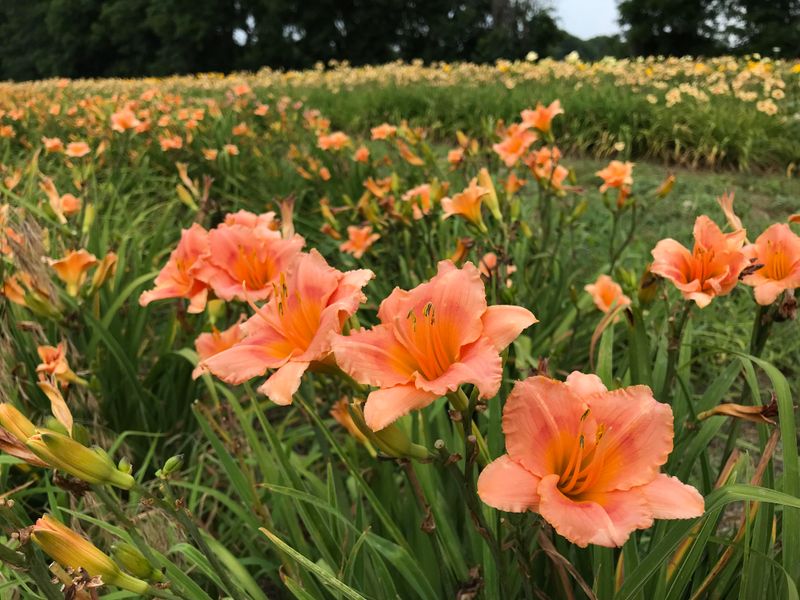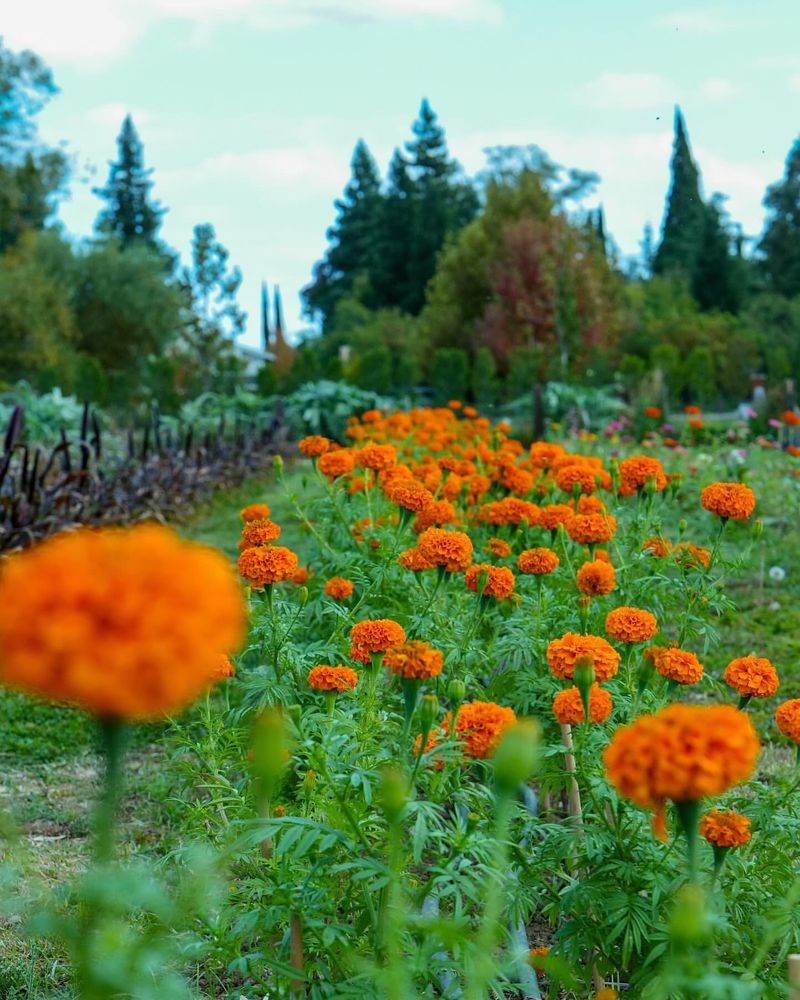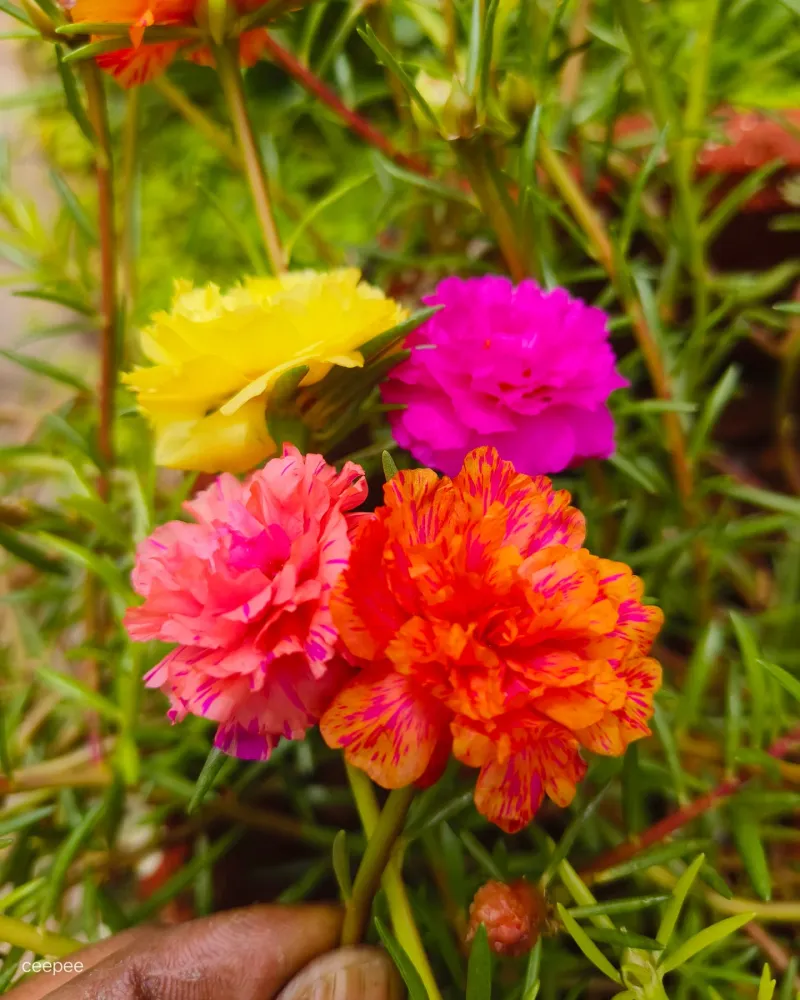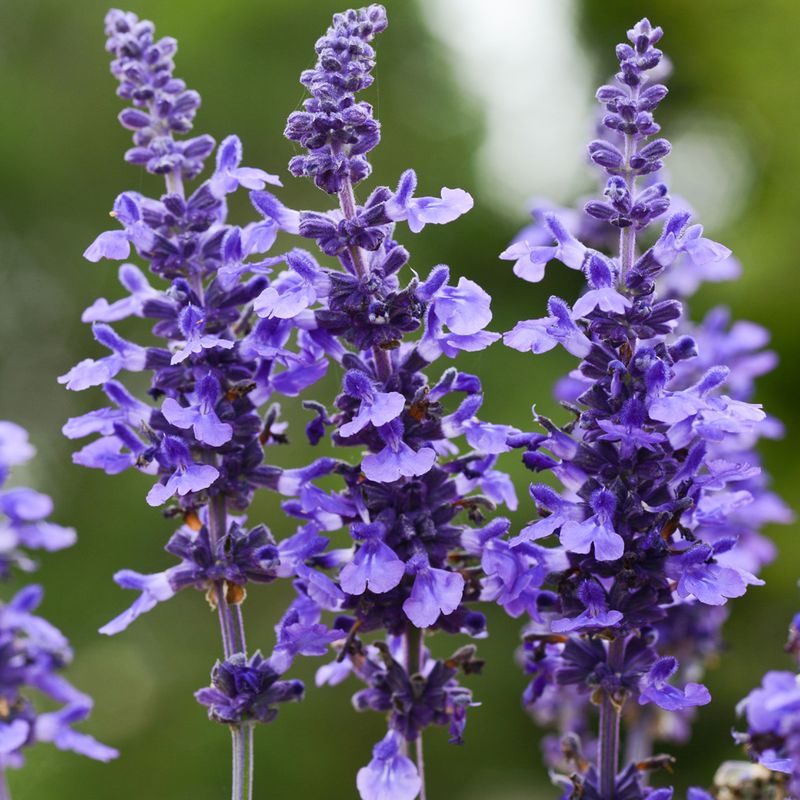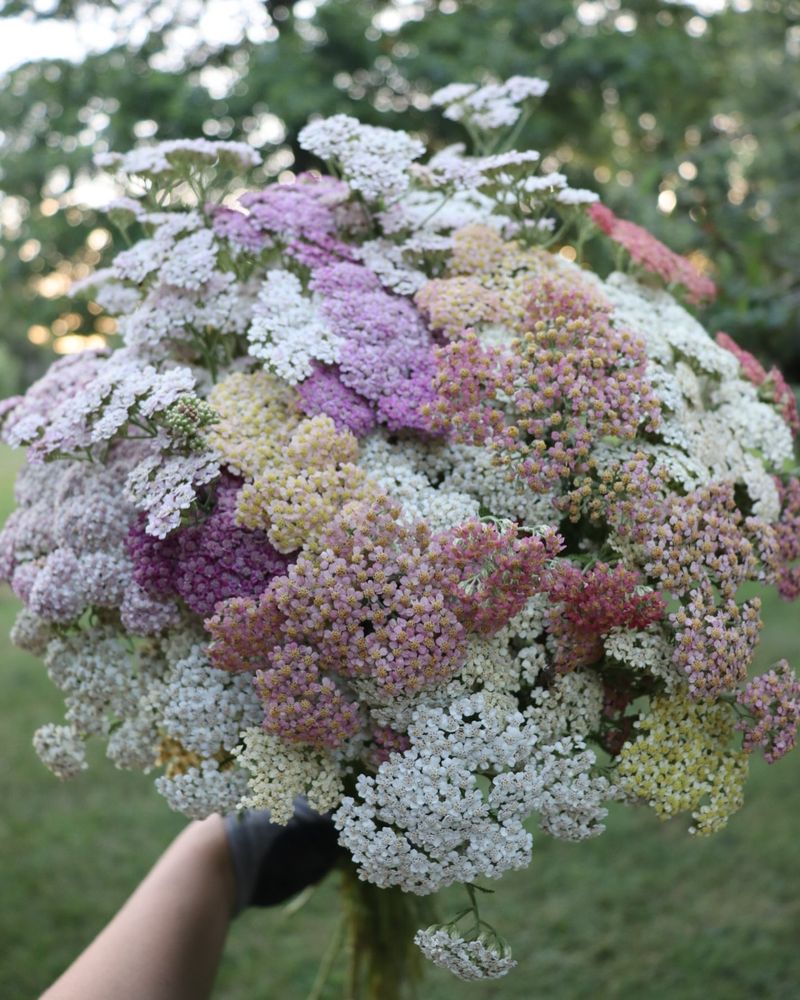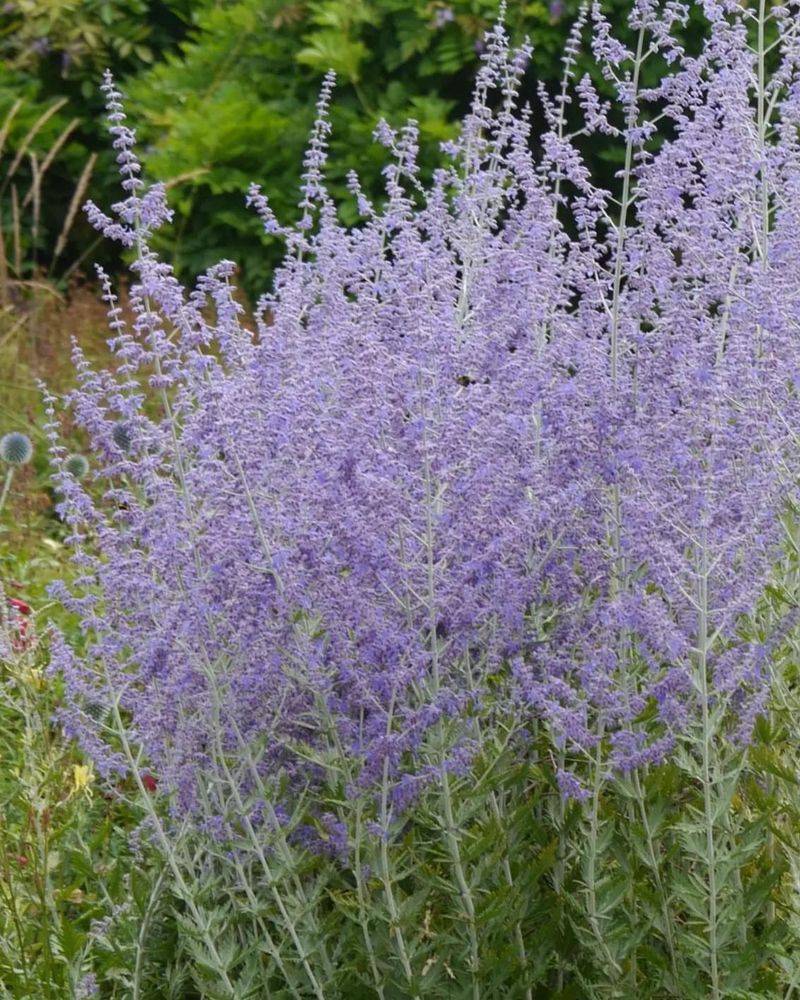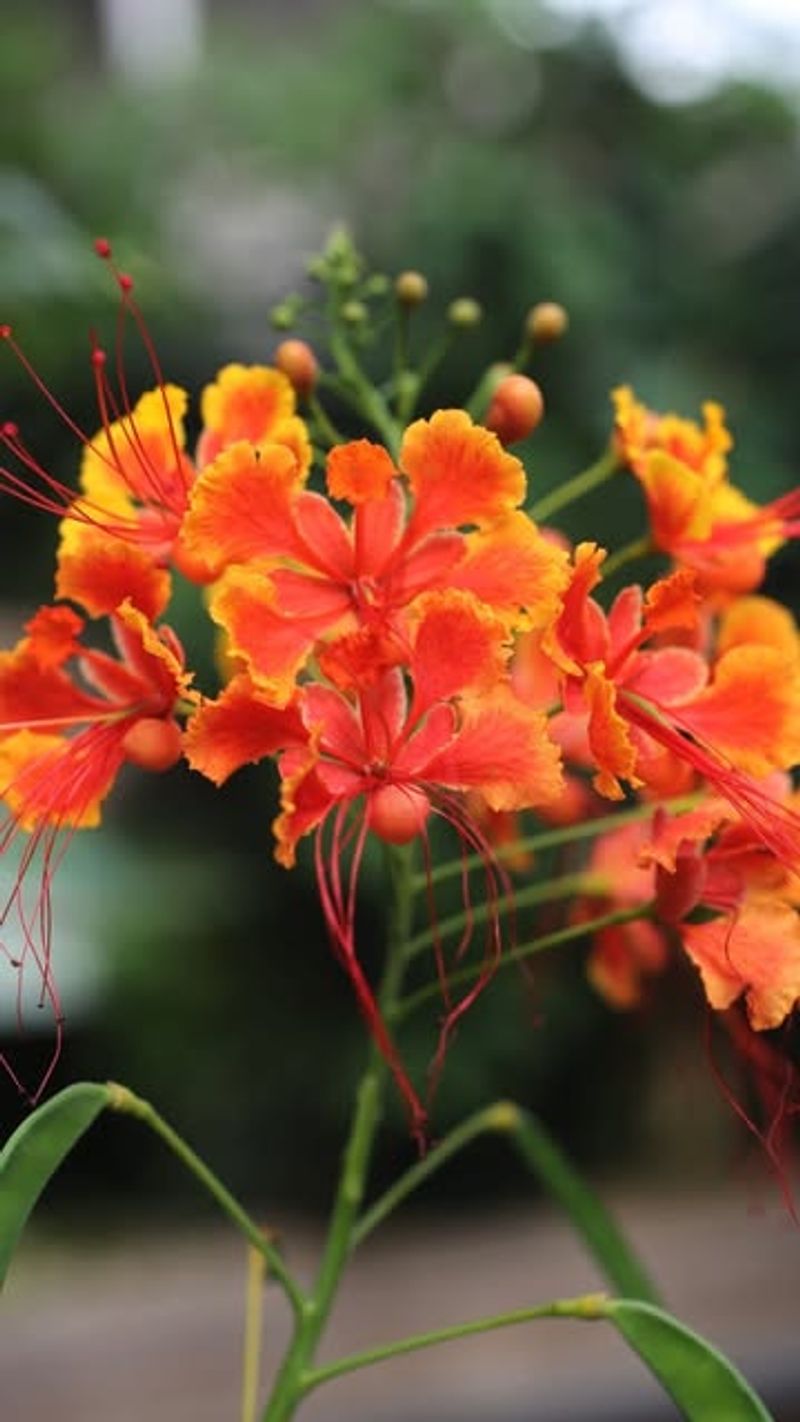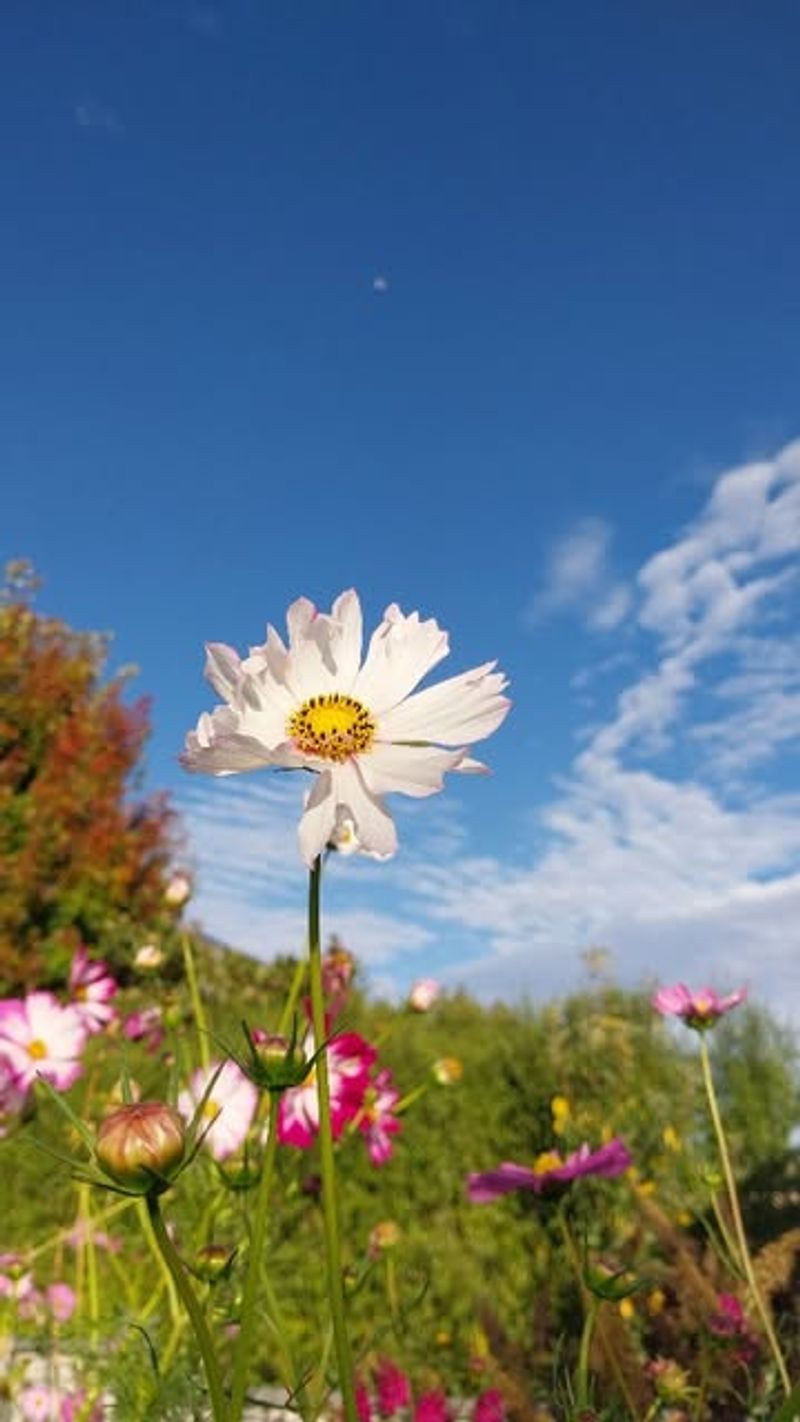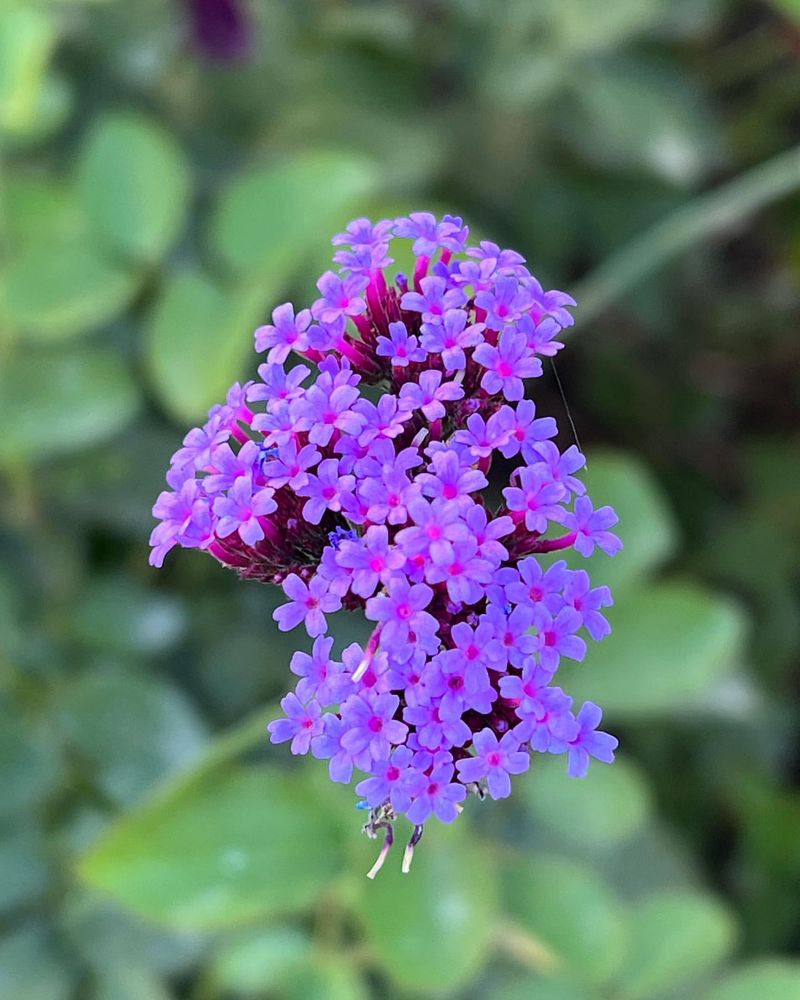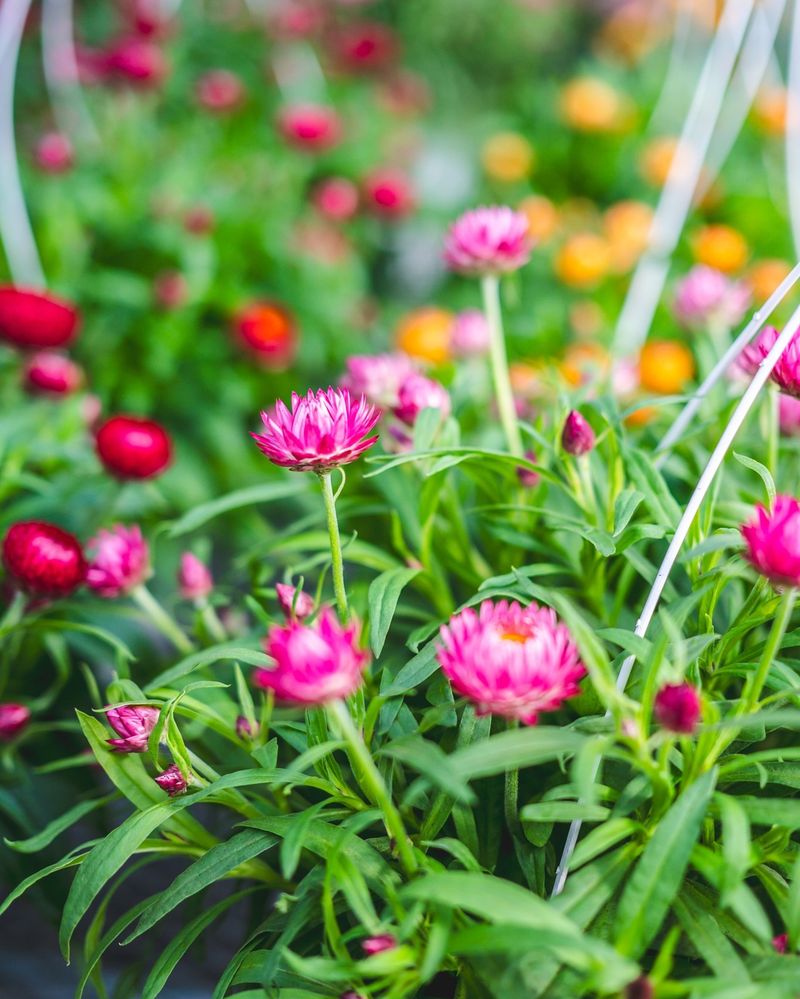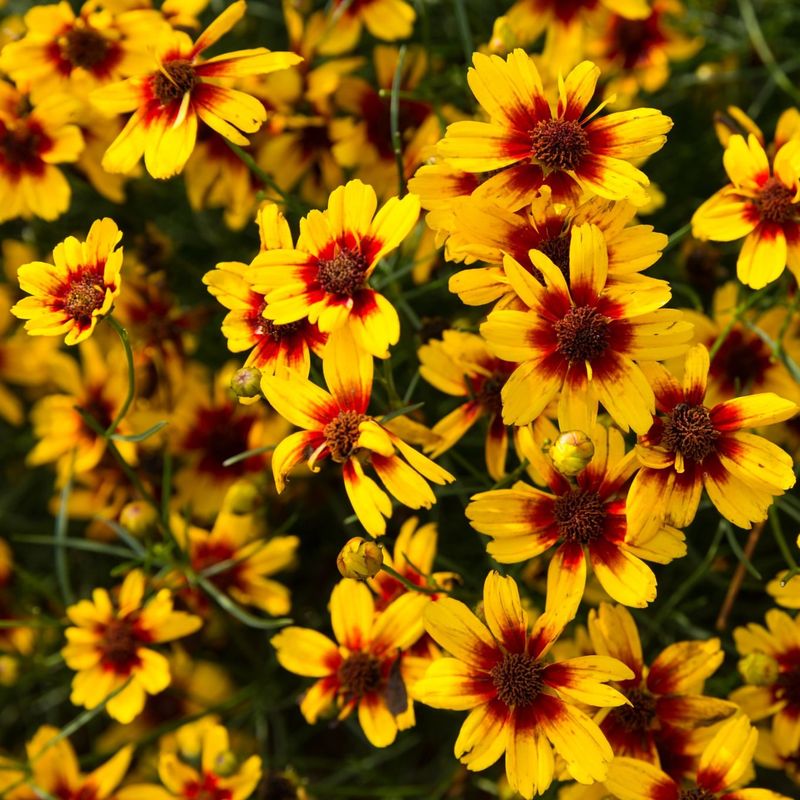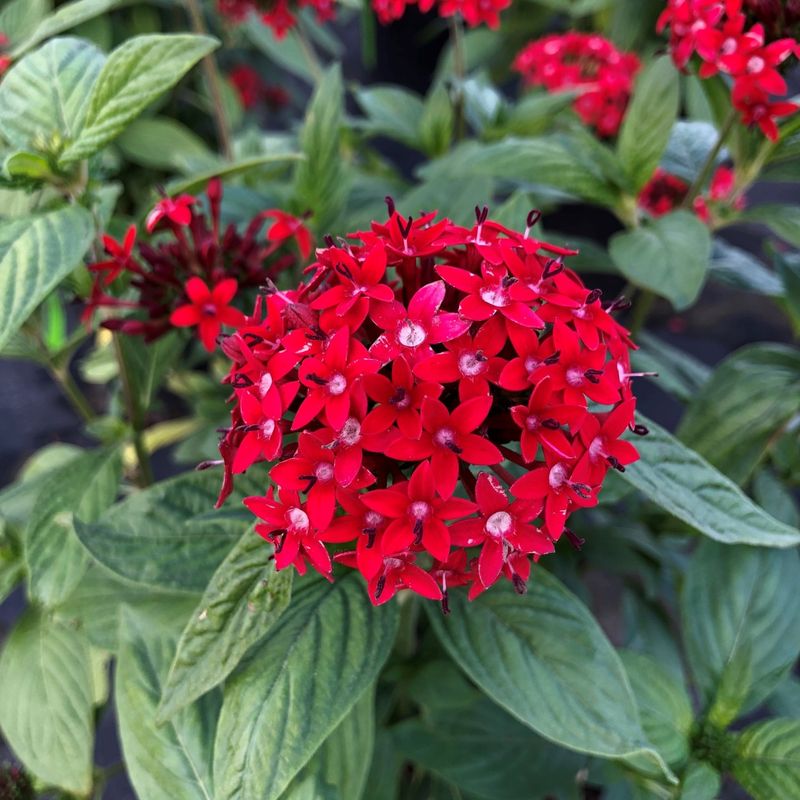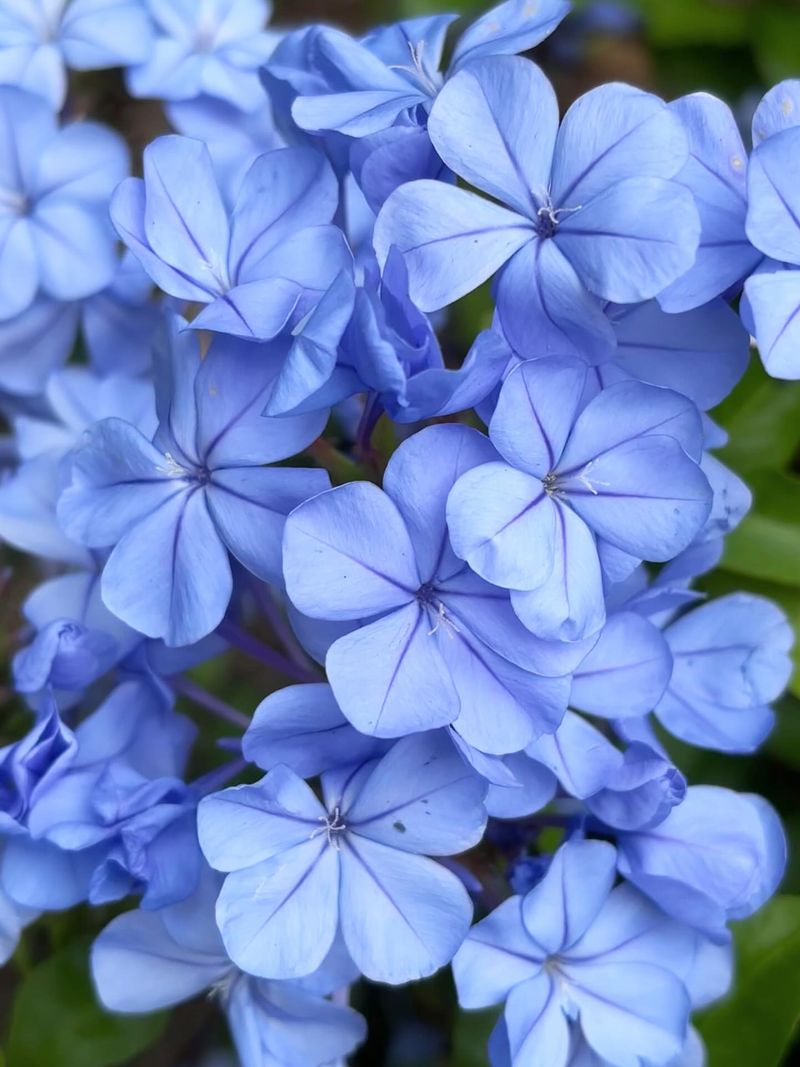July heat turns up the pressure in every garden, but some flowers are built to shine through it. These 20 bloomers don’t just survive—they explode with color, even in scorching sun.
Add them to beds, borders, or containers for a garden that stays vibrant while everything else wilts. They’re bold, beautiful, and built for midsummer glory.
1. Sunflowers Stand Tall
Nothing says summer quite like the cheerful face of a sunflower tracking the sun across the sky. These iconic blooms reach their peak in July, with some varieties towering up to 12 feet tall!
Sunflowers are remarkably drought-tolerant once established, making them perfect for hot, dry conditions. Their deep taproots help them access water far below the surface.
Beyond their beauty, they produce delicious seeds for humans and wildlife alike. Plant them along fences for a dramatic living privacy screen that birds will thank you for later.
2. Zinnias Bring Rainbow Colors
Zinnias laugh in the face of July’s intense heat. These candy-colored blooms actually prefer hot weather and will reward you with non-stop flowers from early summer until frost.
Available in every color except true blue, zinnias come in sizes ranging from petite 6-inch border plants to statement-making 4-foot specimens. Their stiff stems make them excellent cut flowers that last over a week in vases.
Butterflies flock to zinnias, creating a living kaleidoscope in your garden. For the biggest blooms, pinch young plants to encourage branching.
3. Lavender’s Aromatic Charm
Lavender’s silvery-blue spikes reach their fragrant peak during July’s hottest days. Native to the Mediterranean, this herb actually prefers poor, dry soil and blazing sunshine.
Bees become absolutely intoxicated by lavender’s sweet scent, making it a pollinator paradise. The essential oils that give lavender its signature fragrance are most concentrated during hot weather.
Plant lavender along walkways where brushing against it releases its calming aroma. For best results, ensure excellent drainage – these plants hate wet feet more than they fear heat!
4. Black-Eyed Susans Radiate Sunshine
With golden petals surrounding chocolate centers, Black-Eyed Susans create pools of sunshine even on the hottest July days. These native wildflowers have evolved to handle North American summer extremes with remarkable resilience.
Once established, they rarely need watering and will spread gradually to form impressive colonies. Their daisy-like blooms last for weeks, with each plant producing dozens of flowers on branching stems.
Few perennials offer more bang for your buck in the summer garden. Leaving some seed heads in fall provides natural bird feeders for finches and chickadees.
5. Coneflowers Attract Butterflies
Purple coneflowers (Echinacea) have become garden superstars for good reason. Their distinctive raised centers surrounded by drooping petals create architectural interest while standing up to scorching temperatures.
Originally prairie plants, coneflowers have deep roots that help them thrive when other plants wither. Newer varieties offer rainbow options beyond the classic purple, including coral, yellow, and even green blooms.
Butterflies and bees can’t resist their nectar, while goldfinches feast on their seeds later in the season. Their medicinal properties have made them famous for immune-boosting teas.
6. Lantana’s Multicolored Clusters
Lantana’s multicolored flower clusters seem to glow with internal fire during July’s heat. Often featuring yellow, orange, and red blooms on a single plant, they create a tropical feel even in temperate gardens.
Heat and drought only intensify lantana’s flowering. In warmer zones, these plants become woody shrubs, while northern gardeners enjoy them as annuals that bloom non-stop all summer.
Butterflies and hummingbirds battle for position around lantana blooms. The foliage has a distinctive aroma when crushed – some find it pleasantly citrusy while others consider it pungent.
7. Blanket Flower’s Fiery Display
Blanket flowers (Gaillardia) wrap summer gardens in a cozy quilt of red, orange and yellow blooms. Their daisy-like flowers feature fiery bands of color that perfectly complement July’s blazing temperatures.
Native to American prairies, these tough perennials laugh at drought and poor soil. Some varieties bloom continuously from early summer until frost if deadheaded regularly.
The name comes from Native American blankets with similar bold patterns. Plant blanket flowers in hot, sunny spots where other flowers struggle – they’ll reward your neglect with months of carefree color.
8. Daylilies Never Disappoint
Daylilies earn their reputation as the perfect perennial during July’s dog days. While each bloom lasts just one day (hence the name), established plants produce dozens of flower buds on each stem.
Available in every color except true blue, modern daylilies offer ruffled, doubled, and patterned blooms. Their thick, strappy foliage stays attractive even when not flowering, providing structure in garden beds.
Remarkably adaptable, daylilies thrive in conditions from part shade to full sun. The flower buds and blooms are actually edible – they’re used in Chinese cuisine and taste similar to mild lettuce!
9. Marigolds Bring Golden Glory
Marigolds have brightened summer gardens for centuries with their pom-pom blooms in gold, orange, and russet tones. These easy-growing annuals actually increase their flowering in response to July’s intense heat and sunshine.
Beyond their beauty, marigolds serve as natural pest deterrents. Their roots release compounds that repel harmful nematodes, while their distinctive scent confuses insects looking to munch on vegetable plants.
Gardeners in India and Mexico have long used marigolds in religious ceremonies. Plant them among tomatoes and peppers for both practical pest protection and a stunning color combination that celebrates summer’s bounty.
10. Portulaca’s Succulent Surprise
Portulaca (moss rose) transforms July’s scorching rays into spectacular flowering displays. These low-growing succulents store water in their fleshy leaves, allowing them to bloom profusely when other plants have given up.
The tissue-paper blooms come in electric shades of pink, orange, yellow and white, often with multicolored stripes. They close at night or on cloudy days, then reopen when sunshine returns.
Perfect for rock gardens, hanging baskets or as living mulch, portulaca asks for nothing but sunshine and well-drained soil. Their tiny seeds self-sow readily, creating new plants that return year after year in warm climates.
11. Salvia’s Spiky Elegance
Salvias send up spectacular spires of blue, purple, red or white flowers that seem to intensify as July temperatures climb. Their aromatic foliage contains oils that deter deer and rabbits while attracting beneficial pollinators.
Hummingbirds find salvia irresistible, hovering near the tubular blooms for easy nectar access. Many varieties bloom continuously from early summer until frost if spent flower stalks are removed.
Ancient healers considered sage (a type of salvia) sacred for its medicinal properties. Modern gardeners treasure salvias for their architectural form and ability to thrive in hot, dry conditions where other flowers falter.
12. Yarrow’s Flat-Topped Charm
Yarrow’s flat-topped flower clusters float above ferny foliage like miniature landing pads for butterflies. This ancient herb thrives in July’s heat, with modern varieties offering blooms in yellow, pink, red and creamy white.
Native Americans called yarrow “life medicine” for its wound-healing properties. The plant’s deep roots access moisture far below the soil surface, making it incredibly drought-resistant.
Dried yarrow flowers maintain their color for months, making them perfect for everlasting arrangements. In the garden, their strong stems never need staking, even during summer storms and high winds.
13. Russian Sage’s Lavender Haze
Russian sage creates clouds of lavender-blue flowers that seem to float above silver-gray foliage. Despite its delicate appearance, this perennial is actually a tough-as-nails survivor that reaches peak bloom during July’s most brutal heat.
Growing up to 4 feet tall and wide, Russian sage makes a dramatic statement in the landscape. Its aromatic foliage deters most pests and grazing animals while attracting bees from surprising distances.
Not actually a true sage but a distant relative, this plant originates from the harsh steppes of Central Asia. Plant it where you need a drought-tolerant focal point that requires virtually no maintenance.
14. Celosia’s Flamboyant Plumes
Celosia’s flame-like flower plumes or corrugated brain-like combs add theatrical drama to July gardens. Available in hot pinks, reds, oranges, and yellows, these flowers actually intensify their color in response to heat and sunshine.
Originally from tropical Africa, celosia feels right at home during North American summers. Their unusual flowers maintain their shape and color for weeks, making them excellent for both fresh and dried arrangements.
Children are particularly drawn to the unusual texture of celosia blooms. The plants are related to amaranth, and their leaves and seeds are edible – they’re grown as vegetables in parts of Africa and Asia.
15. Cosmos Dance in Summer Breezes
Cosmos flowers sway on slender stems like pink, white, and magenta butterflies suspended in mid-air. These daisy-like blooms reach their peak in July, actually flowering more prolifically in poor soil than rich.
Growing from seed to bloom in just 8 weeks, cosmos provide instant garden gratification. Their feathery foliage adds a delicate texture that contrasts beautifully with bolder summer plants.
The name “cosmos” refers to their perfectly ordered petals, suggesting harmony and balance. Cutting cosmos for bouquets only encourages more branching and blooming, creating a never-ending supply of flowers throughout summer.
16. Verbena’s Clustered Blossoms
Verbena creates carpets of color with clustered blooms that pollinators find irresistible during July’s heat. Available in shades from pure white to deep purple, with many bicolors in between, verbenas bloom non-stop all summer.
The flat-topped flower clusters provide perfect landing pads for butterflies. Some varieties grow upright while others spread horizontally, making verbena versatile for borders, containers, and hanging baskets.
Ancient Europeans considered verbena sacred and used it in religious ceremonies. Modern gardeners value it for its remarkable heat tolerance and ability to attract beneficial insects that help control garden pests naturally.
17. Globe Amaranth’s Everlasting Beauty
Globe amaranth produces perfect spherical blooms that seem fashioned from tissue paper in shades of purple, pink, white, and red. These clover-like flowers maintain their color even in July’s most intense heat and sunshine.
Native to tropical regions, globe amaranth thrives when temperatures soar. Their blooms maintain their bright colors even when dried, making them popular for everlasting arrangements and crafts.
In Victorian times, globe amaranth symbolized immortality because of its long-lasting nature. Plant them in containers or borders where you can appreciate their cheerful bobbing heads throughout the dog days of summer.
18. Coreopsis Brings Buttery Brightness
Coreopsis blankets gardens with buttery yellow, gold, or bicolor blooms that shrug off July’s heat with cheerful resilience. Also called tickseed, these native American wildflowers have evolved to handle summer’s extremes.
Goldfinches perform acrobatic feats to reach coreopsis seeds, making these plants wildlife magnets. Most varieties bloom continuously if deadheaded regularly, providing months of carefree color.
Early American settlers made yellow dye from coreopsis flowers. Modern breeders have expanded the color range to include reds and bicolors while maintaining the plant’s legendary toughness and heat tolerance.
19. Pentas Attract Hummingbirds
Pentas produce star-shaped flower clusters in shades of pink, red, lavender and white that serve as hummingbird and butterfly magnets during July’s heat. Native to Africa and Arabia, these plants actually increase flowering as temperatures rise.
The flowers grow in rounded clusters up to 3 inches across, creating a snowball effect against the dark green foliage. Their constant nectar production makes them essential for wildlife gardens.
In frost-free climates, pentas grow into woody shrubs reaching 3-4 feet tall. Northern gardeners treat them as annuals or bring them indoors for winter, where they’ll often continue blooming near a sunny window.
20. Plumbago’s Sky-Blue Clusters
Plumbago creates clouds of sky-blue flowers that seem to float above the foliage during July’s hottest days. Native to South Africa, this plant actually increases flowering in response to heat and sunshine.
The five-petaled blooms grow in rounded clusters that attract butterflies in droves. In warm climates, plumbago grows as a woody shrub or can be trained as a climbing vine on trellises and fences.
The sticky substance on plumbago flower stems once served as a glue for bookbinding. Modern gardeners treasure it for its true-blue color – a rarity in the flower world – and its incredible heat tolerance.

